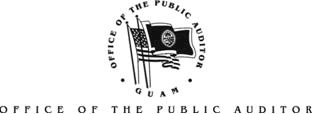
FY 2003 Financial Highlights
November 19, 2004
Guam Waterworks Authority (GWA) ended fiscal year 2003 with a $7.1 million loss. This is the 13th straight year they have had both operating and net losses.
Operating expenses decreased $9 million from $56 million to $47 million. Bad debts expense was the largest single expense reduction of $7.1 million going from $9.2 million in FY 2002 to $2.1 million in FY 2003.
In 2003, GWA reduced their staff by 48 from 311 employees to 263, however the decrease only translated into a $20,530 reduction in salaries and wages. The savings in salaries was offset by an increase in pension costs of $1.28 million. GWA also wrote-off $413,468 due to discontinued projects mainly attributed to projects in Tiyan.
GWA’s aggregate accounts receivable was $26.2 million, an increase from $25 million in FY 2002. Doubtful accounts also rose, totaling $11.6 million for private customers and $7.9 million for government customers equaling $19.6 million, as opposed $17.6 million in FY 2002. This translates into a reserve for uncollectible accounts of 75 cents for every dollar of a receivable compared to 70 cents in 2002.
GWA recorded supplemental/COLA annuities of $905,848 in FY 2002 and only $83,714 in FY 2003, however, GWA has yet to pay the supplemental/COLA to their retirees. GWA and the Consolidated Commission on the Utilities (CCU) have taken the position that there was not enough cash to pay for this entitlement, thus attempted to fund these payments by filing for a surcharge with the Public Utilities Commission (PUC). The PUC did provide for a surcharge to pay for health insurance, but GWA was prohibited from paying supplemental annuities. At 9/30/03, GWA had not paid the supplemental/COLA annuities.
In GWA’s report on compliance and internal controls, there were a total of 20 findings compared to 24 from the previous year. However, 15 of the 20 findings were repeat findings from the previous year. Among those findings, GWA had questioned costs of $930,560, the excessive use of overtime, fixed assets were not reconciled, and accounts payable balances were not reconciled to the tune of $610,000.
In Finding 1, GWA’s questioned costs of $930,560 were due primarily to their inability to provide procurement documentation related to federal grants. This was caused by a combination of a lack of internal controls with safeguarding procurement files and at the project’s inception five to ten years ago, a lack of formal retention policy.
In Finding 12, Deloitte found 317 instances of excessive overtime and a lack of control over overtime policies, of which 313 instances where overtime between 10 to 16 hours was paid to employees on weekdays, four instances where overtime of 24 hours or more was paid to employees on a single day. In addition, one employee was overpaid $18,000 in accrued annual leave. The repayment term is based on a $72 per pay period deduction ($1,872 per year) with the amount to be fully paid by June 2013.
Findings 7 and 14, repeat findings from a year ago, pertain to fixed assets. In finding 7 the fixed assets subsidiary were not reconciled to the control. In finding 14, performing physical inspection of fixed assets showed certain items with a net value of $758,532 could not be located.
In Finding 16, GWA did not regularly reconcile the accounts payable subsidiary ledger to the control, resulting in a difference of over $610,000. In another finding, the promissory note balance included approximately $122,000 in missing deposits.
For a more detailed commentary of GWA’s operations, refer to the Management Discussion and Analysis in the audit report.